A source for sharing stories of inclusion and belonging, bold activism and local change-makers in action.
The mission of this platform is to amplify diverse voices and “good news” stories from within the disability community in Snohomish County and across the region.
*The Arc Amplified is an online publication of The Arc of Snohomish County. Learn more about our mission and values at arcsno.org/about
Do you have a story of inclusion you want to share?
Are you leading local advocacy efforts? Has your family or loved one benefited from activities or programs in Snohomish County that are designed to advance community inclusion?
We want to know!
Send an email to:
Courtney Criss
Leadership & Advocacy Program Manager
Courtney@arcsno.org
or call (425) 258-2459 x 106.
Point of View: What Does “Self-Care” Mean to You?

Point of View: What Does “Self-Care” Mean to You?
By Whitney Stohr
During the second trimester of my first pregnancy, my husband and I learned that our son would be born with several congenital disabilities.
That day — “Diagnosis Day” — was the first fork in the road of our parenting journey. It was the day that we first stepped off the path of “typical” parenthood and on to the less-frequently traveled road of Medical Parenting.
For the first two years of our son’s life, our experience with parenting was nothing short of chaos. We spent months living in a hospital and made countless trips to the emergency room, often in the back of an ambulance, lights on and sirens blaring. We made four medical flights in a single year.
Yes, I found great joy in my son, and in motherhood, but it would be dishonest to say that those early days were not also filled with deep trauma.
And through that trauma, I was constantly asked the same questions: “Are you taking care of yourself?” “What are you doing to practice self-care?” “Are you making sure to fill your cup? Remember, you can’t pour from an empty cup.”
“Self-care.”
I grew to hate that word.
In those days, my son was fragile. There was brain surgery and heart surgery. There was a trach and a ventilator. My emotions were raw. So, no… I was not taking care of myself.
I had no energy to take care of myself. I did not have the energy to think about myself. I was incapable at that moment in my life of thinking about anything other than my son and doing all that I could to keep him alive.
And people kept asking about my “self-care” strategies — like they even existed…
And, every time they asked, I reverted to a well-practiced, “scowl-and-shrug” response.
Maybe you know that response too. Maybe you have it, still, always at the ready.
Admittedly, during this time, I also had absolutely no idea what “self-care” even meant. It was difficult for me to move past the image that the word itself brought to mind: An over-worked and overly-stressed mother, soaking in a bubble bath, with a large glass of wine in hand, a charcoal face mask and cucumber covered eyes, the scent of lavender essential oils wafting through the dimly lit room, acoustic tunes playing softly in the background…. Essentially, the most basic home-spa day.
“And,” I would tell myself, “who has time for that when you’re living in survival mode?!”
Now, I have nothing against people who love bubble baths. I am simply not one of those people, and the mental image of that bubble bath that would pop into my head at the mere mention of “self-care” led me to believe that I was simply not someone who required self-care in the first place. Of course, that was utterly ridiculous, which I have come to learn, but, nevertheless, that was my perspective on self-care at that time in my life.
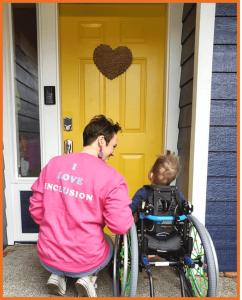 However, the more I grew into motherhood, the more I felt my understanding of self-care mature. This happened through therapy, which itself, is a version of self-care, but also through my quest to recapture, or perhaps, re-define, my personal identity. You know the one — that version of yourself that exists outside of the “you” that is “Mom.” In my attempt to rekindle my passion for all the things that brought me joy before my life revolved around preschool and PTA, I came to realize that my personal interests and passions were intricately tied to the concept of “self-care.” Even the mere pursuit of those interests and passions was self-care!
However, the more I grew into motherhood, the more I felt my understanding of self-care mature. This happened through therapy, which itself, is a version of self-care, but also through my quest to recapture, or perhaps, re-define, my personal identity. You know the one — that version of yourself that exists outside of the “you” that is “Mom.” In my attempt to rekindle my passion for all the things that brought me joy before my life revolved around preschool and PTA, I came to realize that my personal interests and passions were intricately tied to the concept of “self-care.” Even the mere pursuit of those interests and passions was self-care!
I am now in my fourth year of medically complex parenting. My husband and I have been through a lot as we continue to grow as parents and family caregivers. I am a different person than I was before my son was born, and each year, as he grows, I, too, feel my own capacity to mother expand exponentially.
Through this, I have come to understand the value and the need for self-care as one tool in our Parenting Toolbelt that can help us to relax into our breath, reset our priorities, and remember who we are and who we want to be for our kids, our partners and ourselves.
I have come to understand that self-care does not require grand gestures. Self-care can be fleeting moments occurring throughout the day. Self-care is simply that which brings you joy — whatever that means to you.
For me, self-care is taking a moment to smell a freshly brewed cup of coffee. Self-care is a bowl of ice cream for breakfast. (Chocolate with cinnamon sprinkled on top, please.) It is a long walk with my son on a beautiful sunny day. It is a backyard BBQ with double-patty veggie burgers. It is dancing to Prince in the kitchen with my husband, visiting a new coffee shop with my mom and a phone call from my dad. Self-care is a Peloton ride. It is a solo trip to the Post Office with the windows down and the music blaring, screaming out the lyrics and smirking at the horrified looks of the poor souls in the car next to me. It is a new shade of lipstick from an Ipsy bag and a really good, hard cider. Self-care is working on projects that mean something to me. It is volunteering in my community because that is what brings me joy and fills my cup.
And, some days, self-care really is a cold glass of white wine, but in a steaming hot shower…. Because, no matter how far I have come on this mothering journey, I am still not a bubble bath kind of mom.
And that is absolutely okay.
Self-Care for Caregivers
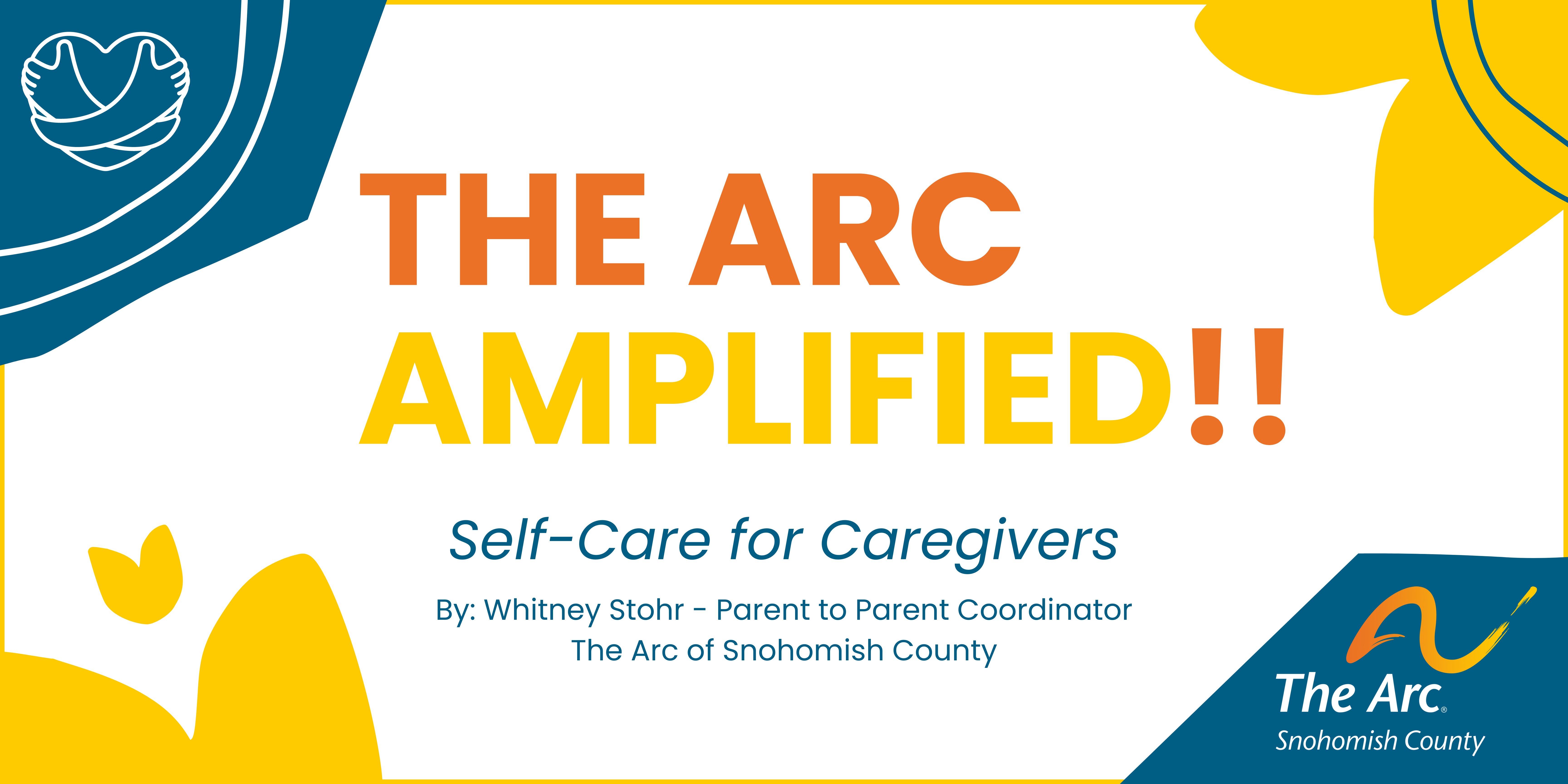
Self-Care for Caregivers
By Whitney Stohr
There is no doubt about it — Caregiving is hard work!
Caregiving requires significant effort. It may seem like there are constant demands — more appointments to schedule, phone calls to make, paperwork to complete. You may feel like you are always “on.” Certainly, caregiving can often lead to feelings of being overstressed, overwhelmed and exhausted.
Caregiving really is stressful, and, as a family caregiver, you are not alone in those feelings.
Caregiver fatigue is “a state of mental, physical, and emotional exhaustion” related to caregiving, which can lead to burnout, anxiety and depression. The Cleveland Clinic describes symptoms of caregiver burnout, including: emotional and physical exhaustion, irritability, feeling hopeless or helpless, withdrawal from friends and family members, or loss of interest in favorite activities. (For more information, visit tinyurl.com/2uh8nufz.)
As family caregivers, if we know that we are at risk of experiencing Caregiver Fatigue, what can we do to prevent ourselves from falling into this state of exhaustion? How can you prevent burnout?
This is why concepts such as self-care, or caregiver wellness, are so important.
At the most basic level, “self-care” simply means taking care of yourself. It means focusing on your personal needs and making sure that you are doing what you need to do to keep yourself physically and mentally healthy. You simply cannot effectively care for another person if you do not also take care of yourself.
Carving out time for yourself during the day is important! This might include a short break from caregiving that allows you to run errands on your own, or one hour each week that you reserve for a session with a family counselor or therapist. Your self-care moment might even be the first twenty minutes of your day, when you are able to sit alone in your kitchen and drink a cup of coffee in the quiet of the morning.
Listed below are other ideas for self-care, organized into three important categories: Physical Self-Care, Mental Self-Care, and Soul-Filling Self-Care.
Physical Self-Care: Taking care of your physical self
- Schedule a 10- or 20-minute, solo walk outdoors, 2 or 3 times each week
- Incorporate light repetitions with a pair of hand-weights into your morning routine
- Focus on nutrition — What does “healthy eating” look like for you?
- Find a skincare routine that is mood-changing and rejuvenating
- Give yourself a bedtime — Sleep is essential!
Mental Self-Care: Supporting your mental and emotional wellbeing
- Talk with a therapist about the stress of caregiving
- Connect with a parent, caregiver or family support group
- Start a daily Gratitude Journal
- Take 5-minute breaks to stretch your body throughout the day
- Spend time with a pet, or listen to a favorite playlist
Soul-Filling Self-Care: Refueling your soul through interests and activities that bring you joy
- Catch up with an old friend over a cup of coffee
- Rekindle your interest in a favorite hobby
- Volunteer once each month to support a cause that is meaningful to you
- Remember how you used to play — Dance, sing, draw, shoot hoops, etc.
- Prioritize time for prayer or a weekly religious service, yoga or meditation
**********
ADDITIONAL RESOURCES
- A Guide to Caregiver Self-Care — Rutgers Health University (2019)
- Caregiver Self-Care Activity Book — VA Caregiver Support
- Creating a Self-Care Plan — Northern Kentucky University
- Self-Care Assessment & Daily Attention Diary — VA Caregiver Support
- Self-Care Exercises and Activities — University of Buffalo
- The Big List of Self-Care Activities
**********
Whitney Stohr is a Parent to Parent Coordinator at The Arc of Snohomish County. She is passionate about advocating for medically complex children and children with disabilities and their families. She is a mom and medical caregiver herself, who is energized by working closely with other parent/family caregivers. She lives with her three-year-old son Malachi and husband Jason in Lynnwood. Connect with her online at whitney@arcsno.org.
Everyday Gratitude Scavenger Hunts

Everyday Gratitude: Scavenger Hunts for Kids AND Caregivers
One predominant theme during the month of November is always that of thankfulness, or gratitude. It is often viewed as a month of intended reflection; a time to slow down and think deeply about the good things we have in our lives. Annual practices, like the November “30 Days of Gratitude” Challenge, and ongoing mindfulness strategies, like keeping a Gratitude Journal, encourage us to consider small things that bring us joy.
Simply thinking about things for which we hold gratitude can make us happier. It can alleviate some of the stress we carry from day to day. It can boost our mental and physical health.
Here is a link where you can learn more about the benefits of practicing gratitude and different ways to get started in your practice: tinyurl.com/b25ruy5t. And, here is a video by Sesame Street in Communities that helps young children understand the meaning of “gratitude” — tinyurl.com/3krkc39v.
For fun, this month, we have created Gratitude Scavenger Hunts, for both kids and caregivers, to help remember some of the small things in our lives that bring us joy, that make us happy, and for which we hold gratitude.
CLICK HERE to access the “Attitude of Gratitude Scavenger Hunt – Just for Kids!”
CLICK HERE to access the “Attitude of Gratitude Scavenger Hunt – For Family Caregivers”
**********
Whitney Stohr is a Parent to Parent Coordinator at The Arc of Snohomish County. She is passionate about advocating for medically complex children and children with disabilities and their families. She is a mom and medical caregiver herself, who is energized by working closely with other parent/family caregivers. She lives with her three-year-old son Malachi and husband Jason in Lynnwood. Connect with her online at whitney@arcsno.org.
Dad & Caregiver
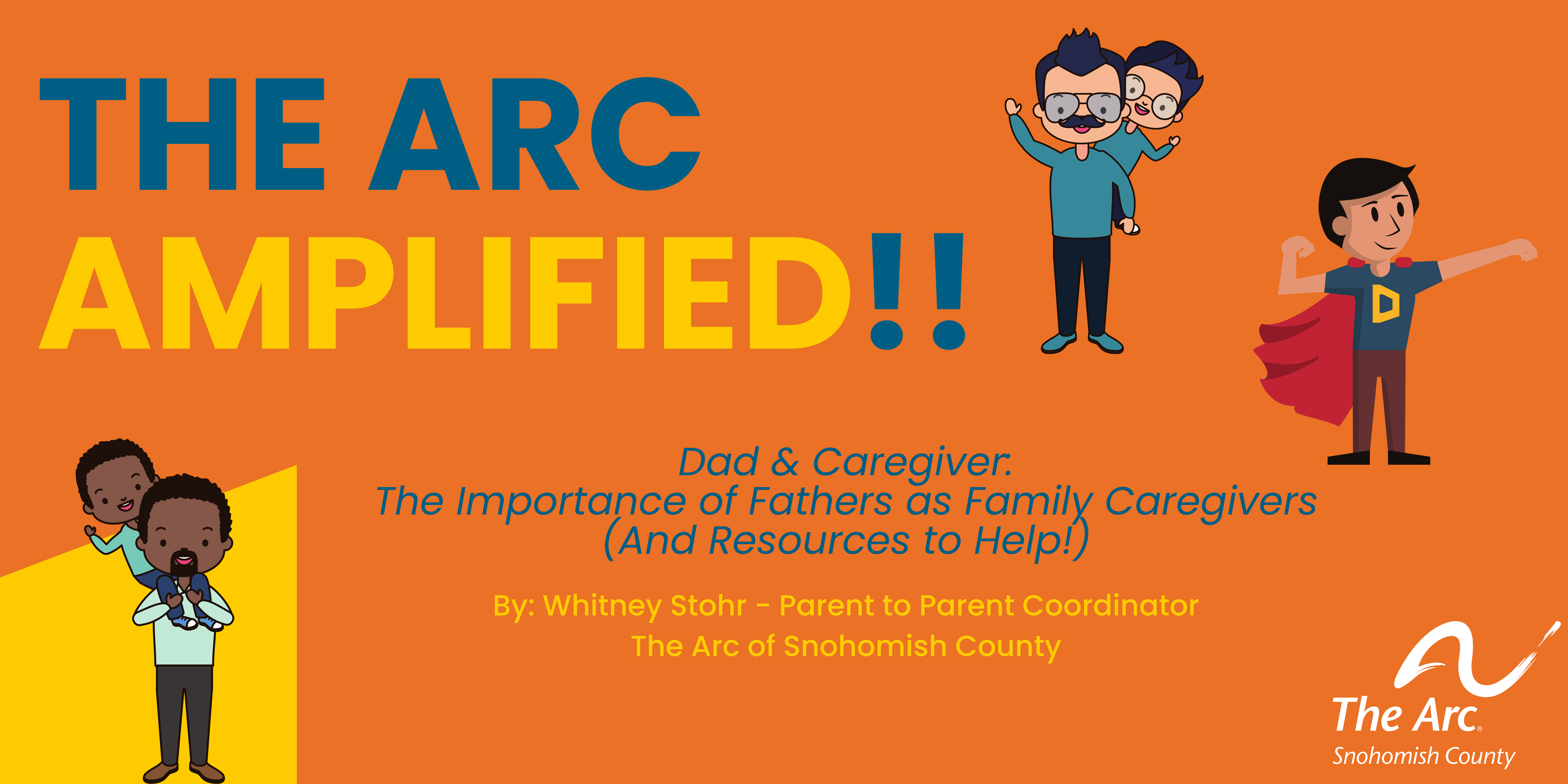
Dad & Caregiver: The Importance of Fathers as Family Caregivers
(And Resources to Help!)
This November, during National Family Caregivers Month, we recognize the many contributions of family caregivers in our communities, our state and across the nation.
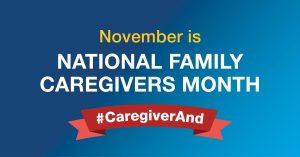 Family caregivers are part of the “informal caregiving” sector, comprised of millions of Americans who provide caregiving services for a family member or loved one, but are not paid or formerly employed in this role. Family caregivers are a diverse group. A family caregiver may be a spouse who cares for their partner when illness hits. They may be an adult child who assists their aging parents by shopping for groceries, driving them to medical appointments or assisting with household chores and upkeep. A family caregiver may be an adult sibling or other close family member who support a loved one with a disability, who, while living independently, requires assistance with specific tasks. In the context of “family” caregiving, the caregiver may not actually have a familial relationship with their loved one; they may, instead, be a neighbor or dear friend. And, certainly, family caregivers include the parents of children with disabilities.
Family caregivers are part of the “informal caregiving” sector, comprised of millions of Americans who provide caregiving services for a family member or loved one, but are not paid or formerly employed in this role. Family caregivers are a diverse group. A family caregiver may be a spouse who cares for their partner when illness hits. They may be an adult child who assists their aging parents by shopping for groceries, driving them to medical appointments or assisting with household chores and upkeep. A family caregiver may be an adult sibling or other close family member who support a loved one with a disability, who, while living independently, requires assistance with specific tasks. In the context of “family” caregiving, the caregiver may not actually have a familial relationship with their loved one; they may, instead, be a neighbor or dear friend. And, certainly, family caregivers include the parents of children with disabilities.
While caregiving can be incredibly rewarding, the stress of the responsibility also takes a toll on caregivers. Research finds that family caregivers are at increased risk of physical and mental health decline, likely associated with chronic stress, and often report feelings of depression and anxiety, overwhelm, and isolation. Finances and other close relationships may suffer as well.
In 2020, 53 million Americans provided unpaid care to an adult or child with medical needs or a disability. Parent-caregivers of children with developmental disabilities are included within this larger sector. While it is true that most primary caregivers are women, in recent years, fathers have taken on a larger share of caregiving responsibilities. This has led to more deliberate efforts to include fathers and other male caregivers in conversations about caregiving, parenting a child with a disability or chronic medical condition, self-care, support and connection, healthy relationships, and more.
The dominant image of a woman as the primary family caregiver can make it more difficult for men to connect with programs, services and support groups that include other male caregivers. It also reinforces gender norms (that are harmful to both men and women!), which can make it even harder for men to seek the help they need.
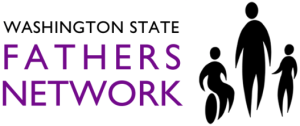 The Washington State Fathers Network plays a central role in connecting male family caregivers with support groups, resources and information, and learning opportunities. The network, which has chapters in counties across the state, supports men in their caregiving role, as dads and partners, and as individuals. The Snohomish County chapter of the Fathers Network meets twice monthly, in the evenings, and is led by Jake Murray, Parent/Family Coalition Coordinator at The Arc of Snohomish County. Contact Jake Murray at fathersnetwork@arcsno.org.
The Washington State Fathers Network plays a central role in connecting male family caregivers with support groups, resources and information, and learning opportunities. The network, which has chapters in counties across the state, supports men in their caregiving role, as dads and partners, and as individuals. The Snohomish County chapter of the Fathers Network meets twice monthly, in the evenings, and is led by Jake Murray, Parent/Family Coalition Coordinator at The Arc of Snohomish County. Contact Jake Murray at fathersnetwork@arcsno.org.
Learn more at fathersnetwork.org.
*****************************************************
Programs and services supporting fathers and other male caregivers:
- Connecting Fathers Workgroup — Website: tinyurl.com/37w7jjzu
- Community Cafes — Website: tinyurl.com/3aa4cwbb
- Dads Appreciating Down Syndrome — Website: tinyurl.com/cumfu7v9
- Dads Connect — Website: tinyurl.com/2h3kkvb8
- Dads M.O.V.E. — Website: dadsmove.org
- Families of Color Seattle — Website: focseattle.org
- Puget Sound Dads Group — Facebook: facebook.com/PugetSoundDadsGroup/
- Washington State Fathers Network — Website: fathersnetwork.org
Additional resources & information for male caregivers:
- Annual Washington Fatherhood Summit — Interagency Fatherhood Council Washington — Link: tinyurl.com/62v5auwz
- Conscious Fathering — Parent Trust for Washington Children — Link: tinyurl.com/3dcz42y2
- Dads Who Have Children with Special Health Care Needs: Taking Care of Yourself — Washington State Fathers Network — Link: tinyurl.com/3k2tccrt
- “Man Enough to Care” Mini-Series — Caregiving Across Generations — Link: caringacross.org/manenough/
- Why We Need to Reevaluate These Harmful Caregiving Stereotypes — Caregiving Across Generations — Link: tinyurl.com/y4sedmp4
*****************************************************
Whitney Stohr is a Parent to Parent Coordinator at The Arc of Snohomish County. She is passionate about advocating for medically complex children and children with disabilities and their families. She is a mom and medical caregiver herself, who is energized by working closely with other parent/family caregivers. She lives with her three-year-old son Malachi and husband Jason in Lynnwood. Connect with her online at whitney@arcsno.org.
National Family Caregivers Month
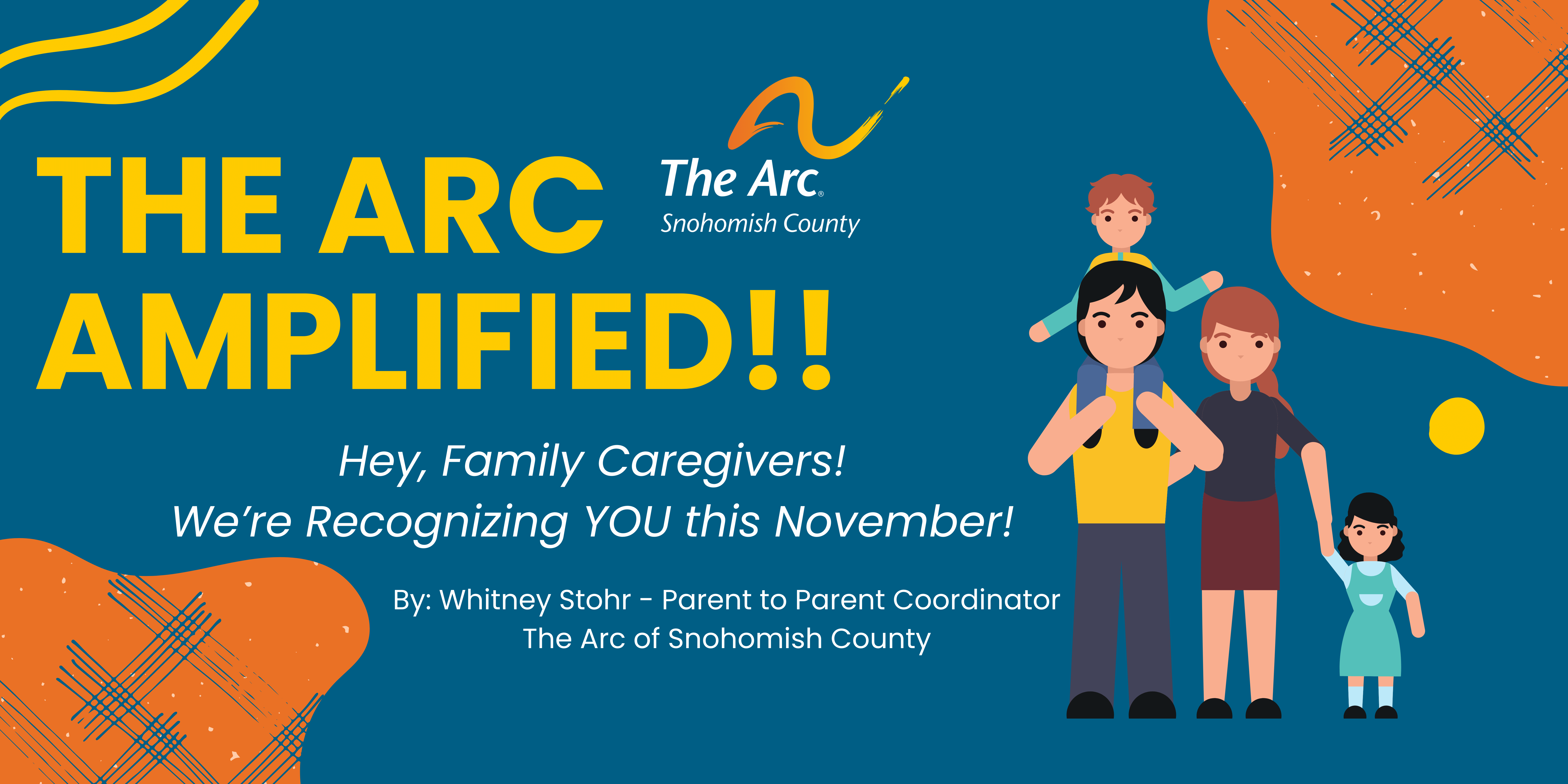
Hey, Family Caregivers! We’re Recognizing YOU this November!
November is National Family Caregivers Month!
In November, we take time to recognize the family caregivers who provide support to their loved ones, family members and friends, in communities across the country. It is an opportunity to raise awareness and gain knowledge about caregiving issues and what we can do to advocate for policy change and programs that support family caregivers.
Family caregivers are considered “informal caregivers” — that is, they are individuals who assist another person, who is often their spouse, child or other family member, with medical care or daily living activities, without receiving compensation for their services. In contrast, “formal caregivers” are those who are paid for their caregiving work, such as health aids or staff at long-term care facilities.
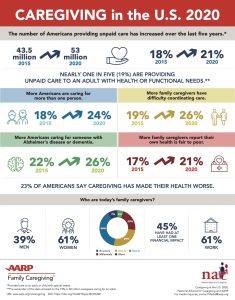 The number of family caregivers has increased significantly in recent years, jumping from 43.5 million Americans in 2015 to 53 million in 2020 (Source: AARP/NAC). The majority of family caregivers are women. Of those individuals, approximately 24% are providing care for more than one person. In Washington state, the number of family caregivers exceeds 850,000 individuals (Source: WA DSHS). Altogether, the economic benefit of services rendered by informal family caregivers is valued at well over $450 billion per year (Source: FCA).
The number of family caregivers has increased significantly in recent years, jumping from 43.5 million Americans in 2015 to 53 million in 2020 (Source: AARP/NAC). The majority of family caregivers are women. Of those individuals, approximately 24% are providing care for more than one person. In Washington state, the number of family caregivers exceeds 850,000 individuals (Source: WA DSHS). Altogether, the economic benefit of services rendered by informal family caregivers is valued at well over $450 billion per year (Source: FCA).
There is no doubt that family caregivers have a profound impact on the lives of their loved ones and within their wider communities. The work of family caregivers should be recognized and honored, not only in the month of November, but throughout the year.
Zion recently attended his team’s game against the Houston Rockets (108-118) as a spectator. There he was photographed Zion Williamson weight gain 2022 by journalist Steve Helwick. And as soon as he posted the picture on his Twitter page, the image went viral. Users noticed a major change in Williamson’s appearance – in the picture, he looks much bigger than ever. Halvik was forced to delete the post – too many negative comments about Williamson being overweight were pouring in.
However, the positive impact and benefit of providing care to a family member does not erase the challenges of informal caregiving. Statistics show that family caregivers often struggle with the mental, physical and financial impact of providing unpaid care. Many report declining health, chronic medical conditions or disabilities of their own, depression and anxiety, stress and overwork (Sources: ACL, CDC, FCA). A significant percentage of family caregivers experience difficulty managing their job and caregiver responsibilities, and many report at least one financial impact directly resulting from caregiving (Source: AARP/NAC).
So, perhaps, more than simply recognizing the contributions and support system created by family caregivers, it is critical to raise awareness about the challenges of caregiving and the programs and policies that are needed to support the millions of Americans who, in turn, are there for their loved ones.
**********
Additional information about the informal/family caregiving sector:
- Caregiving in the U.S. 2020 — National Alliance for Caregiver, in partnership with AARP — Link: com/bcn5jbz4. (Webpage includes recent reports on caregiving with specific statistics on different caregiver demographics)
- Long-Term Services and Supports and Family Caregiver — AARP Public Policy Institute — Link: com/73p9nta8. (Webpage includes a wide selection of caregiving research, publications and other resources)
- 10 Tips for Family Caregivers — Caregiver Action Network (CAN) — Link: com/53h5rybj.
Information about National Family Caregivers Month and awareness raising:
- National Family Caregivers Month — U.S. HHS Administration for Community Living — Link: com/5x3cr9ba. (Information about NFCM and popular hashtags and social media graphics available to raise awareness)
- National Family Caregivers Month – #CaregiverAND — Caregiver Action Network (CAN) — Link: com/4u475dbv.
**********
Whitney Stohr is a Parent to Parent Coordinator at The Arc of Snohomish County. She is passionate about advocating for medically complex children and children with disabilities and their families. She is a mom and medical caregiver herself, who is energized by working closely with other parent/family caregivers. She lives with her three-year-old son Malachi and husband Jason in Lynnwood. Connect with her online at whitney@arcsno.org.
Local Community Walks

Two Local Walks Support the Medical Community in a BIG Way!
In the month of October, our county’s expansive community of individuals with disabilities, parents and family members, friends and loved ones, recognized both Disability History & Awareness Month and National Disability Employment Awareness Month, as well as National Down Syndrome Awareness Month and Spina Bifida Awareness Month. We also acknowledged Mental Illness Awareness Week (Oct. 3-9) and World Cerebral Palsy Day (Oct. 6). Recognition months, weeks and days are a fantastic opportunity to raise awareness about important issues, policies and programs impacting our communities.
Two groups in particular deserve a huge, congratulatory (virtual) high-five for the awareness raising, community advocacy and outreach accomplished through their annual walk/run events in October 2021.
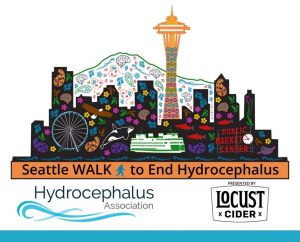 The Seattle WALK to END Hydrocephalus is a 5K run/walk held at Magnuson Park in Seattle. The walk brings together the regional community of people living with Hydrocephalus, their families, friends and caregivers, to connect, raise awareness and support the Hydrocephalus Association, a national advocacy organization.
The Seattle WALK to END Hydrocephalus is a 5K run/walk held at Magnuson Park in Seattle. The walk brings together the regional community of people living with Hydrocephalus, their families, friends and caregivers, to connect, raise awareness and support the Hydrocephalus Association, a national advocacy organization.
Hydrocephalus is a neurological condition caused by an over-accumulation of cerebrospinal fluid in the ventricles of the brain. This build-up of fluid causes pressure on the brain, which can be fatal if untreated. Hydrocephalus affects over 1 million Americans, of all ages, due to a variety of causes. There is no cure for hydrocephalus, and the current treatment involves (often multiple) brain surgeries to ensure that the cerebrospinal fluid is able to drain from inside the brain. Learn more about Hydrocephalus at hydroassoc.org.
Every year, more than 14,000 people participate in a WALK to End Hydrocephalus at over 40 locations across the United States. The Seattle WALK is one of the largest of these events. Click here to view highlights from the 2021 event.
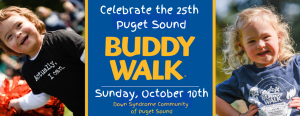 The 25th Annual Puget Sound Buddy Walk was held on October 10th at Downtown Bellevue Park. The annual event is organized by the Down Syndrome Community of Puget Sound.
The 25th Annual Puget Sound Buddy Walk was held on October 10th at Downtown Bellevue Park. The annual event is organized by the Down Syndrome Community of Puget Sound.
Down syndrome occurs when an individual is born with an extra copy of chromosome 21. Down syndrome is the most common chromosomal condition. In the United States, one in every ~700 babies is born with Down syndrome. Learn more at ndss.org.
The National Buddy Walk® program was founded in 1995 by the National Down Syndrome Society as a way to celebrate Down Syndrome Awareness. Today, over 300,000 people participate in more than 250 Buddy Walks worldwide. The event is now, not only a public awareness program, but also an advocacy event for the Down syndrome community. The local Buddy Walk is the largest event of the year for the Down Syndrome Community of Puget Sound, a nonprofit organization working to empower people with Down syndrome and their families through education, outreach and community building programs.
Does your medical community or diagnosis-specific organization hold an annual walk/run to raise awareness? We would love to know more about it? Share with us at whitney@arcsno.org.
**********
Whitney Stohr is a Parent to Parent Coordinator at The Arc of Snohomish County. She is passionate about advocating for medically complex children and children with disabilities, and their families. She is a mom and medical caregiver herself, who is energized by working closely with other parent/family caregivers. She lives with her three-year-old son Malachi and husband Jason in Lynnwood. Connect with her online at whitney@arcsno.org.
Arc Staff Halloween


AROUND THE ARC: NEW HIRES

AROUND THE ARC: NEW HIRES
Whitney Stohr — Parent to Parent Coordinator / Sibshop Coordinator
The Arc of Snohomish County is happy to welcome Whitney Stohr to our team!
A Message from Whitney:
My name is Whitney Stohr. I am a mom and wife, family-caregiver, community volunteer and advocate for social justice, equity and inclusion. I am a new face here at The Arc of Snohomish County as I am stepping into the role of Parent to Parent Coordinator and working with the Sibshops program.
My new role at The Arc is something of a career transition as I previously worked in community engagement and economic development. I am an attorney by training with experience in public policy, and when my son Malachi (age 3) was born with a disability and complex medical needs, my interest in policymaking began to veer in the direction of disability justice, healthcare and inclusive education policy, community accessibility and universal design. In my free time, I serve on the Family Advisory Council at Seattle Children’s Hospital; the Parent Advisory Group for the Washington State Department of Children, Youth and Families (DCYF); and, locally, as a member of the Snohomish County Children’s Commission and the City of Lynnwood Parks & Recreation Board. I also volunteer with the Spina Bifida Advocates of Washington State (SBAWS) and Spina Bifida Association of America.
I live in Lynnwood with Malachi, my husband (Jason), and our two little dogs (Neptune & Marmalade). Jason direct e-commerce sales for a manufacturing company that makes accessibility equipment such as access ramps and other personal use items. Malachi attends virtual preschool through the Edmonds School District and, in our free time, we RV-camp together as a family. You can connect with us on Instagram @rollin.w.spinabifida.
Connect with Whitney by email, at whitney@arcsno.org, or by phone at 425-258-2459 x 106.
The Purple Pumpkin Project
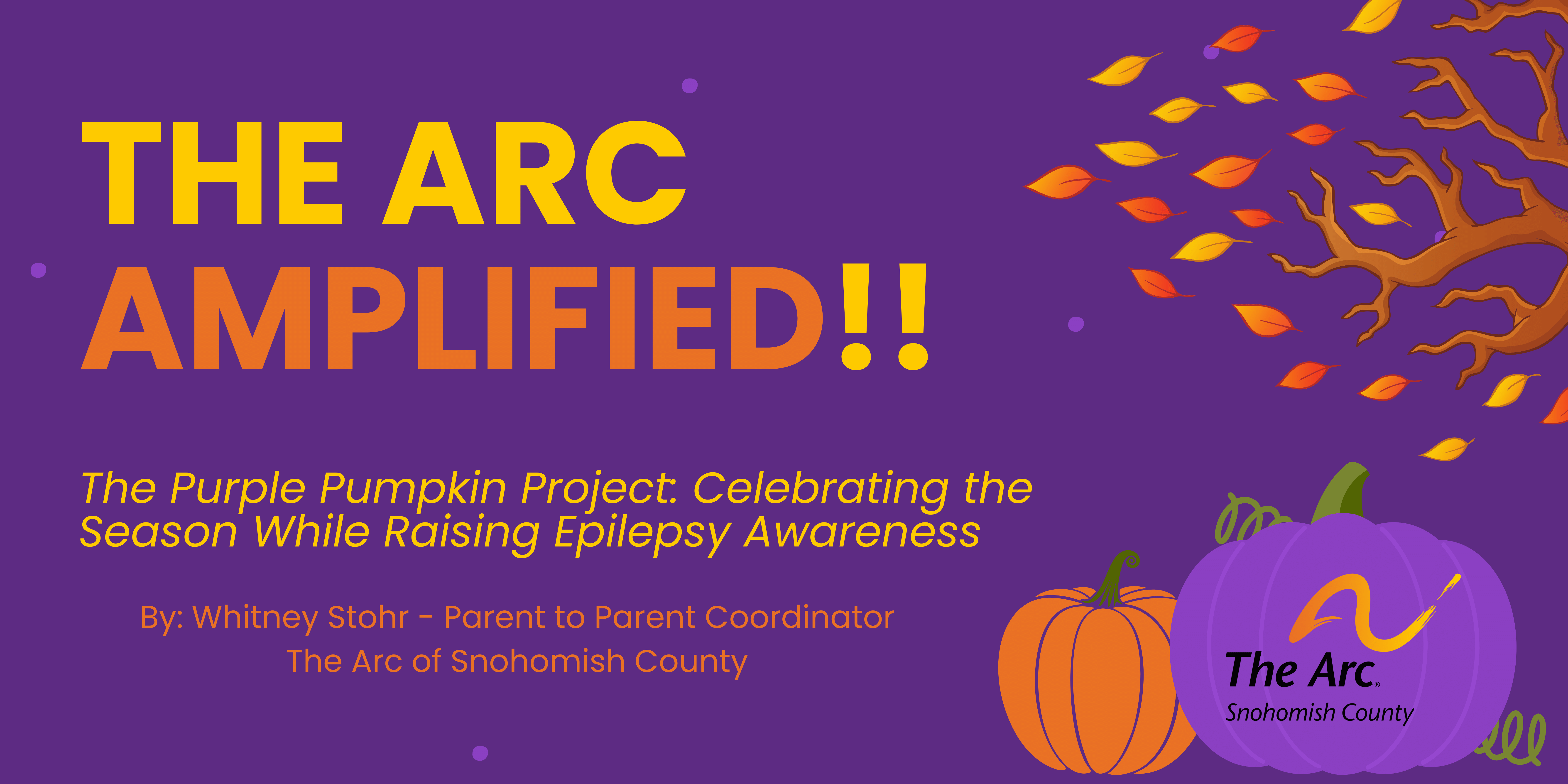
The Purple Pumpkin Project: Celebrating the Season While Raising Epilepsy Awareness
I love the month of October. It is, by far, my favorite month of the year. I love the changing colors of the trees, the crunching leaves underfoot, the crispness of the morning air, and the feeling of a thick, comfy sweater.
In October, I excitedly embrace all things pumpkin. I am *that* person, and I would proudly wear a pumpkin-loving badge of honor. (Shout out to all my fellow pumpkin-loving peeps out there!)
Naturally, for my family, October means a trip to a local pumpkin patch, pumpkin pies, pumpkin spice lattes, pumpkin muffins and pumpkin soups…
Pumpkins, pumpkins, pumpkins…
Most of them orange;
But, one of them, always, purple.
My three-year-old son Malachi has epilepsy. He was diagnosed with the condition two years ago, and it has proven the most challenging of diagnoses. It is incredibly scary to watch someone you love experience a massive seizure, and, for many people, epilepsy is difficult to control. It is ever-present and threatening.
In the United States, over 3.4 million people live with epilepsy. Epilepsy is diagnosed when an individual experiences two or more unprovoked seizures separated by at least 24 hours; or, after one seizure where there is a high-risk of future occurrence. About 1 in every 26 people in the United States will develop epilepsy at some point in their lives. It is much more common than most people believe.
For six out of every 10 people with the condition, the cause of their epilepsy is unknown. One-third of people with epilepsy live with uncontrolled seizures because the medications currently available to prevent seizures do not work for them.
Epilepsy can also be dangerous. For people with epilepsy, their overall risk of dying is 1.6 to 3 times higher than the general population. In some cases, epilepsy itself can cause death. (Learn more at epilepsy.com)
For these reasons, it is critical to raise awareness about the impact of epilepsy and to support advanced medical research and programs to develop new and better treatment options.
This is where the purple pumpkins come in…
The Purple Pumpkin Project is an annual, awareness-raising campaign of the national Epilepsy Foundation.

The Purple Pumpkin Project was founded in 2012 by Ron Lamontagne, the father of a child with epilepsy, as a way to spark conversation with others about the impact of epilepsy for his son and their family. Ron created a Facebook page about his idea, which quickly expanded, reaching all 50 states within just two days. Today, these purple pumpkins provide an opportunity to engage others in conversation whenever they ask: “Why is your pumpkin purple?”
 To participate in the Purple Pumpkin Project, families simply paint a pumpkin PURPLE. Any shade of purple will do! Then, they can use their pumpkin to raise awareness or engage in fundraising efforts to support the Epilepsy Foundation. Some groups hold purple pumpkin decorating parties; others host unique, pumpkin themed events. The Epilepsy Foundation offers people a platform to create a personal fundraising page, where they can post photos of their purple pumpkins and share their stories. The ultimate goal: To END EPILEPSY.
To participate in the Purple Pumpkin Project, families simply paint a pumpkin PURPLE. Any shade of purple will do! Then, they can use their pumpkin to raise awareness or engage in fundraising efforts to support the Epilepsy Foundation. Some groups hold purple pumpkin decorating parties; others host unique, pumpkin themed events. The Epilepsy Foundation offers people a platform to create a personal fundraising page, where they can post photos of their purple pumpkins and share their stories. The ultimate goal: To END EPILEPSY.
For my family, ending epilepsy is a dream. We hope that, one day soon, epilepsy related seizures will be entirely preventable. We hold hope for new treatment options and continued advancement in our understanding and knowledge of this condition. We hope for these things for Malachi, and for everyone out there touched by epilepsy.
Until that day arrives, every year in October, we will continue to paint our pumpkins various shades of PURPLE.
AROUND THE ARC: NEW HIRES
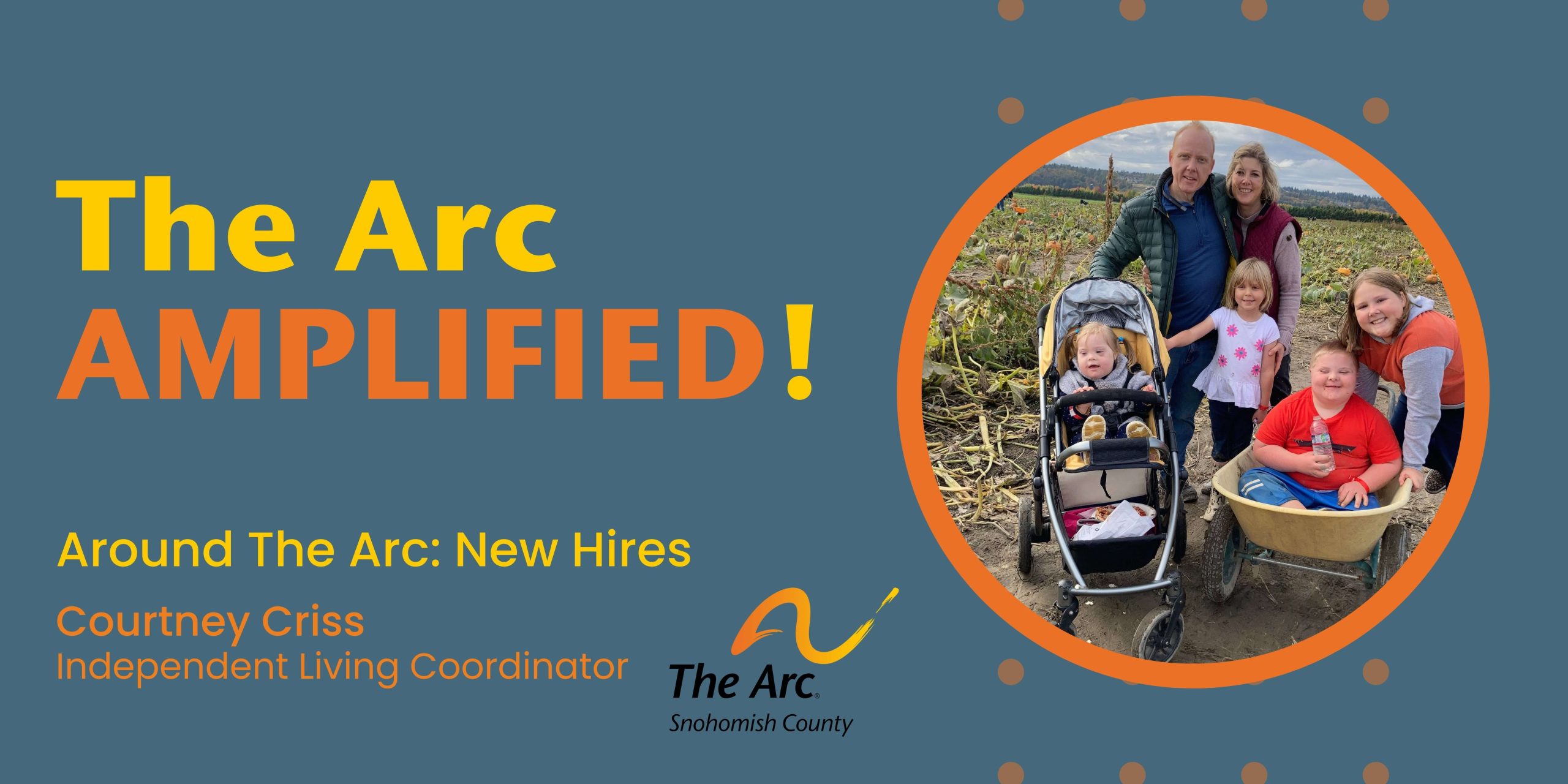
AROUND THE ARC: NEW HIRES
Courtney Criss — Independent Living Coordinator
The Arc of Snohomish County is happy to welcome Courtney Criss to our team!
A Message from Courtney:
My name is Courtney Criss, and I am the Independent Living Coordinator for the Arc. My husband and I live in Marysville with our four beautiful, talented, amusing children. Two of them were born with Down syndrome. I have served on the Board of Directors of The Down Syndrome Community of Puget Sound, and I currently volunteer with them by teaching a parent class about inclusion in education (Ready, Set, Kindergarten). I have been a stay-at-home-mom for the past two years and am excited about returning to employment in a field that means so much to me and my family.
Connect with Courtney by email, at courtney@arcsno.org, or by phone at 425-258-2459 x 113.

